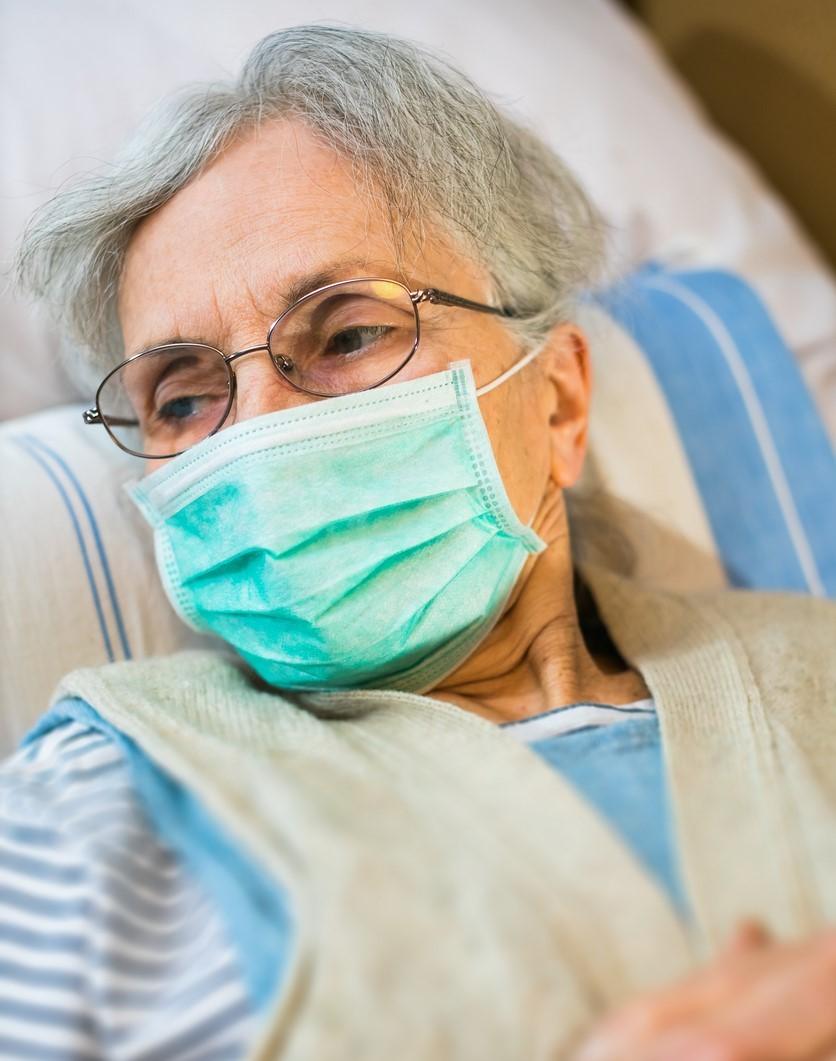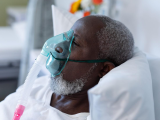Two studies today suggest that COVID-19 patients who are very frail or have a cardiac arrest are two three times more likely to die than those not infected with the virus.
Frailty, COVID-19, and critical care
The first study, an observational investigation led by researchers at the University of Birmingham in England and published in Age and Ageing, involved 5,711 COVID-19 patients with a median age of 74 years at 55 hospitals in 12 countries.
The investigators found that the risk of death rose with advancing age, with those older than 80 at 3.6 times the risk of death as those 18 to 49. Very frail COVID-19 patients (Clinical Frailty Score [CFS], 8) were 3.0 times more likely to die than those with a low score (1 to 3), independent of age. CFS scores of 4 to 9 were associated with increased likelihood of adverse outcomes. Frailty is a state in which the body is more susceptible to the effects of illness.
Risk of death also rose with increasing inflammation, kidney disease, cardiovascular disease, and cancer and was higher in men than in women. While delirium was not associated with an increased risk of death, it was tied to a higher likelihood of critical care admission, as were greater disease severity, higher levels of inflammation, and body-mass index of less than 18.5 kg/m2 (extremely underweight) or 30 or higher (obese). Patients older than 80 years and those with frailty or dementia were less likely than others to be admitted to a critical care unit.
Patients who were older, more frail (CFS, 7 vs 1 to 3), and had delirium, dementia, or mental illness were seven times more likely to require higher levels of care at home or in long-term care facilities after release from the hospital.
The authors said that the increased death rates with advancing age and frailty could be the result of coronary artery dysfunction leading to constriction of blood vessels and organ damage, high levels of inflammation, a tendency toward blood clots, increased likelihood of viral infection due to abnormal angiotensin-converting enzyme 2 activity, and age-related impaired immune response.
"Increased awareness of importance of measuring frailty alongside age and comorbidities in hospitalised patients will assist clinicians making holistic decisions involving treatment of reversible pathology, prevention of unwanted or burdensome treatment, and early rehabilitation," the authors wrote.
Lead study author Carly Welch said in a University of Birmingham press release that older age was identified as a significant risk factor for COVID-19 early in the pandemic. "However, not all older people are the same, we all age differently—some people can live well into their 90s without developing frailty, and it can develop even without the presence of other long-term conditions," she said.
Coauthor Mary Ni Lochlainn of King's College London said in the release that she hopes that the study findings will increase understanding of frailty as a risk factor separate from age and will influence both hospital and public policy. "Increased understanding of frailty within the general public will enable improved communication between clinicians, patients, and their relatives or carers, and can be used in thinking about how we ensure that the right treatment is given for all patients in line with their wishes," she said.
No COVID patient with cardiac arrest released from hospital alive
The second study, led by researchers from the University of Gothenburg in Sweden and published in European Heart Journal, included 1,946 cases of out-of-hospital cardiac arrest (OHCA) and 1,080 cases of in-hospital cardiac arrest (IHCA) reported to the Swedish Registry for Cardiopulmonary Resuscitation from Jan 1 to Jul 20, 2020.
After the pandemic began in mid-March, 88 (10%) of patients with OHCA and 72 (16.1%) with IHCA had COVID-19, with a 30-day death rate 3.4-fold higher in those with OHCA and 2.3-fold higher with IHCA. Women who had an IHCA were nine times more likely to die during the pandemic than before.
The odds ratio (OR) for death within 30 days for OHCA patients with coronavirus, compared with their uninfected counterparts, was 3.40, and the corresponding hazard ratio (HR) was 1.45. Adjusted 30-day survival was 4.7% for COVID-19 patients and 9.8% for uninfected patients during the pandemic, versus 7.6% before the pandemic. Of all OHCA COVID-19 patients, 83.4% died within 24 hours of hospitalization.
IHCA patients diagnosed as having COVID-19 were also at higher risk for death than their uninfected peers (OR, 2.27); the corresponding HR was 1.48. Adjusted 30-day survival in IHCA COVID-19 patients was 23.1%, versus 39.5% in uninfected patients and 36.4% before the pandemic. Most (60.5%) IHCA COVID-19 patients died within 24 hours of hospitalization.
Of OHCA patients, 20.4% had shockable heart rhythms, compared with 25.9% for those with IHCA. A total of 1,746 OHCA patients (89.7%) and 680 IHCA patients (63.0%) died. Compared with before the pandemic, the rate of patients released from the hospital alive fell from 38.9% to 33.0%. As of Jul 20, no COVID-19 patients with cardiac arrest had been released alive, and only four patients (4.5%) survived to 30 days.
While the improved survival rate for non-coronavirus patients with OHCA or IHCA was not statistically significant, if there had been an improvement, it could have been due in part to the 8.2% increase in witnessed cardiac arrest and the 47% increase in witness use of defibrillators, the authors say.
Compared with the prepandemic period, COVID-19 nearly tripled the risk of dying of OHCA, rising 4.5-fold for men and by a third for women. The risk of death after an IHCA more than doubled, increasing by half in men and more than nine times in women.
The share of OHCAs caused by breathing problems increased 2.7-fold during the pandemic, while the use of compression-only cardiopulmonary resuscitation (CPR) rose 8.6%. At the same time, the proportion of people treated with both chest compression and mouth-to-mouth resuscitation declined from 33% before the pandemic to 23%.
The authors noted that this may have been caused in part by guidelines issued in March 2020 by the European Resuscitation Council and the Swedish Resuscitation Council that advised witnesses of cardiac arrest in someone suspected to have COVID-19 to avoid mouth-to-mouth resuscitation and concentrate on chest compressions.
Coauthor Araz Rawshani, MD, PhD, of the University of Gothenburg, said in a European Society of Cardiology press release that while bystander compression-only CPR may be as effective as combined compressions and mouth-to-mouth resuscitation in other patients, it may not be the case for those with COVID-19, who have respiratory failure.
Rawshani said the study also revealed that fewer hospitalized COVID-19 patients were being monitored with electrocardiograms (ECGs), which can save lives by immediately alerting staff to a cardiac arrest. "We believe that COVID-19 patients should be monitored with ECGs and monitored for oxygen saturation, as this would allow for prompt recognition of irregular heartbeats and declining oxygen saturation," he said.





















